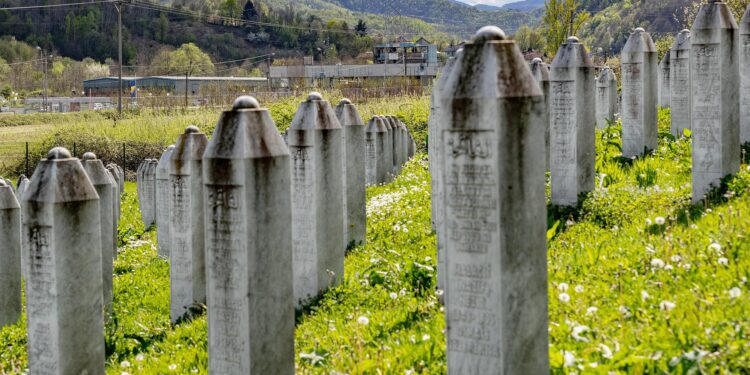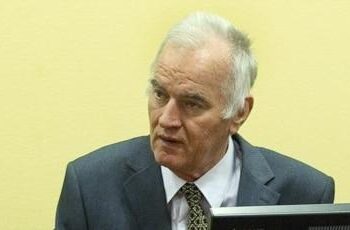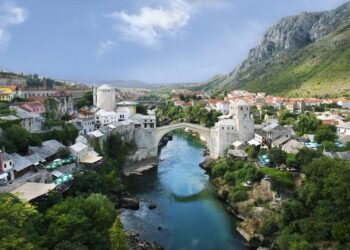More than thirty years after the harrowing genocide that devastated the town of Srebrenica, its scars remain painfully visible. Once a symbol of hope and UN protection during the Bosnian War, Srebrenica is now a somber reminder of one of the darkest chapters in recent European history. As survivors and families continue to grapple with loss and seek justice, the legacy of the 1995 massacre still reverberates through the community, challenging efforts toward reconciliation and memory. This article takes a closer look at how Srebrenica endures, reflecting on the enduring impact of the genocide three decades on.
Srebrenica’s Lingering Trauma and the Quest for Justice
More than thirty years after the massacre that claimed the lives of over 8,000 Bosniak men and boys, Srebrenica remains a stark symbol of unresolved pain and a fractured history. The community grapples daily with the emotional scars left by the genocide, where families continue to search for the remains of missing loved ones, and survivors confront the weight of collective trauma. Memorial sites and commemorations serve as poignant reminders of the atrocities, but they also highlight the ongoing challenge of
reconciliation in a deeply divided society. Efforts to document testimonies and preserve memories face hurdles from international political tensions and local resistance, complicating the path toward truth and healing.
Justice remains a contentious and incomplete process. While numerous key perpetrators have been prosecuted by the International Criminal Tribunal for the former Yugoslavia (ICTY) and regional courts, many victims’ families still await accountability. The pursuit of justice involves multiple dimensions:
- Legal action: Trials continue against lower-profile suspects linked to the events in Srebrenica.
- International support: Diplomatic efforts aim to ensure cooperation in the extradition and investigation processes.
- Community initiatives: Local organizations work to educate younger generations and promote ethnic tolerance.
| Aspect | Status | Challenges |
|---|---|---|
| Victim Identification | Ongoing | Limited DNA samples and fragmented remains |
| Judicial Proceedings | Partially Completed | Political interference and limited witness cooperation |
| Reconciliation Efforts | Fragile | Ethnic divisions and denialism |
The Role of International Community in Addressing Genocide Aftermath
In the decades following the Srebrenica genocide, the international community has played a pivotal role in both acknowledgment and healing efforts, though challenges remain. Global organizations and foreign governments have invested in justice mechanisms such as the International Criminal Tribunal for the former Yugoslavia (ICTY), which sought to hold perpetrators accountable. Beyond trials, numerous NGOs and international bodies have initiated programs aimed at promoting reconciliation and supporting survivors. These include educational campaigns to preserve historical truth, psychosocial assistance for victims’ families, and efforts to ensure secure environments where displaced populations can return.
However, the road to recovery is complex, marked by inconsistencies in international responses. While some nations have actively pushed for remembrance and reparations, others have been criticized for political inertia or selective engagement. The endurance of ethnic tensions in the region underscores the ongoing need for sustained diplomacy and multilateral cooperation. The table below summarizes key international contributions to the aftermath of the genocide:
| Entity | Initiatives | Impact |
|---|---|---|
| United Nations | ICTY establishment, peacekeeping missions | Legal accountability, reduced conflict |
| European Union | Funding reconstruction, integration policies | Economic recovery, regional stability |
| NGOs | Human rights advocacy, survivor support | Community rebuilding, mental health aid |
| Individual States | Humanitarian aid, diplomatic pressure | Resource provision, political dialogue |
Strategies for Healing and Reconciliation in Post-Conflict Bosnia
Healing in Srebrenica remains a delicate process, deeply intertwined with remembrance and justice. Initiatives have focused on community dialogue, survivor support, and educational programs aiming to bridge ethnic divides. Local NGOs regularly organize workshops encouraging empathy and mutual understanding, while international bodies support efforts to document testimonies and preserve memorial sites. These activities are pivotal in fostering a collective memory that honors the victims while paving the way for reconciliation.
Moreover, socio-economic development is increasingly recognized as a crucial component of post-conflict recovery. Investment in infrastructure, job creation, and youth empowerment provides opportunities for renewed hope and growth in the region. The table below highlights key pillars driving this multifaceted approach:
| Strategy | Purpose | Impact |
|---|---|---|
| Dialogue Platforms | Foster communication between ethnic groups | Reduced tensions, increased trust |
| Memorial Preservation | Honor victims, maintain historical awareness | Strengthened collective memory |
| Economic Initiatives | Create jobs, empower youth | Improved living standards |
| Psychosocial Support | Assist trauma recovery | Enhanced mental health |
To Conclude
Three decades after the tragic events that unfolded in Srebrenica, the town remains a solemn reminder of the horrors of genocide. As survivors continue to seek justice and reconciliation, the memory of those lost persists in shaping both local and international efforts to prevent such atrocities from recurring. The shadow of 1995 still lingers, underscoring the enduring challenges faced by Bosnia and the global community in confronting the legacy of mass violence.
















